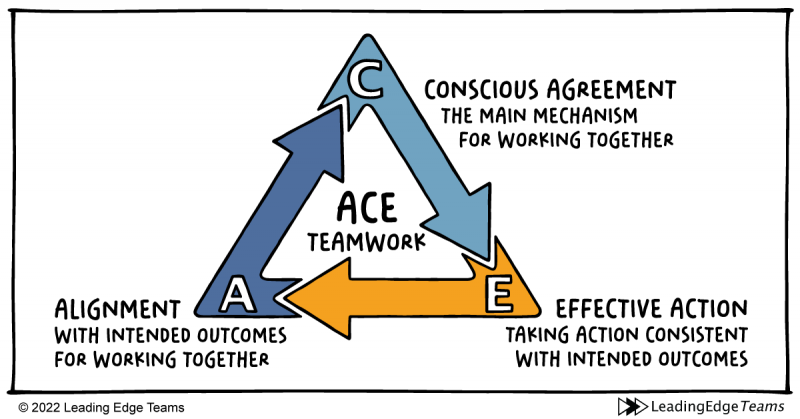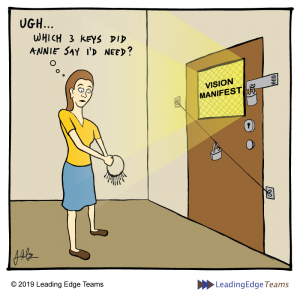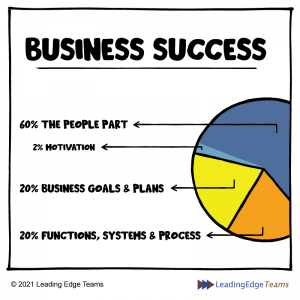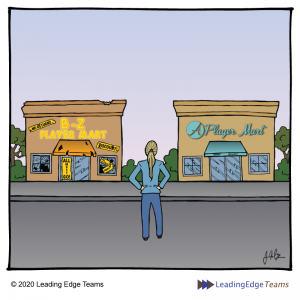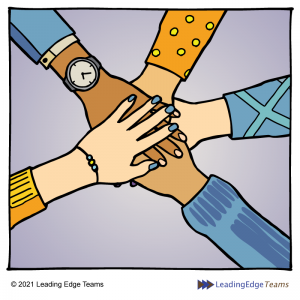Whether you are a leader or team member who feels responsible for everything, or a person who only focuses solely on your own thing, don’t be blind to all the other people and roles that it takes to coordinate completing the puzzle—seeing the big picture—making agreements—and producing business results.
As an entrepreneur, or as a team member, do you ever try to put all the “puzzle pieces” of the company together all by yourself? It’s heavy to build alone! You may have been there, done that.
If not, maybe you’re a person who is in the habit of the other extreme. You stay caught up in your own “piece of the puzzle,” so much so that you neglect the other “puzzle pieces” that impact your work and connect you to the whole—and the big picture.

Teams of people need CONSCIOUS AGREEMENTS.
When teams align (through agreement) to efficiently take collective action to complete team projects, businesses grow. Success in the long haul, proves it!
Unfortunately in business, without agreements, there are team delays, frustration, confusion, miscommunication, wasted time—the very reason behind lack of success and achievement of strong business results. A solo approach ultimately backfires.
In business, consistently doing your part is essential, but be keenly aware of how your piece fits together with others pieces to complete the big picture. One of the keys to accomplishing this in business, is through building skills of daily AGREEMENT making among the team/the players.
Right now, on your team, “agreements may be hidden in plain sight”
Here’s the deal—reaching business goals is accomplished through a series of agreements, day-in and day-out.
Do you know the specifics of your role? Interestingly, your first agreement is the job you agreed to take, and next, the defined role(s) of your job. You’ve already made some agreements; they’re in plain sight, but you may not consciously know it.
For example, in my work with businesses, many team members cannot clearly define their role. Obviously it’s a must, yet many people simply don’t know the specifics of their jobs; their daily responsibilities and tasks are a guessing game that create workplace frustration, overlap, confusion, and decreased productivity. Having no role clarity is like treading in murky waters. Not productive or fun!
Does your team need agreements?
Maybe so, if projects frequently veer off-track, or your expectations of others on the team often aren’t met.
Have you or others asked these questions? Can you easily answer them? If not, they’re “red flags” that reveal you have roles and functions, in plain sight, that NEED AGREEMENTS:
- How do the pieces I contribute in my role (function, responsibilities, expertise) connect and fit together with others on the team?
- What other departments or functions does my role impact? (Update and revisit organization charts and their roles on a regular basis.)
- Who do I go to with updates or changes that influence project outcomes?
- Why am I doing this? (Agreements clarify the “why” and the purpose, helping all people impacted actively contribute to the company goals.)
- Where am I expected to be and when? (Team agreements for office hours, team Zoom meetings, slack interactions, email responses, weekends, launch times etc.)
Think of other questions that frequently pop up often in your company. That’s where CONSCIOUS AGREEMENTS are needed, and hidden in plain sight!
Practice
Like all skills in business, how to utilize agreements to their fullest is a learned process that takes practice. STEP ONE, ROLE CLARITY is a great starting place. Clearly defined roles about who does what, especially in entrepreneurial businesses, aligns departments, tasks, and individual performance expectations right up front. I think you can see how clear roles alone prevent the CEO and the team from bouncing all over in chaos, overwhelm, and disorganization.
Think about your day. Where is there a need for “agreements that are in plain sight?” How would agreements (in areas you identify) benefit team members and the company? After giving it some thought… take action. It won’t feel nearly so heavy!
“If you want to go fast, go alone. If you want to go far, go together.” —African Proverb
Contact us anytime, when you feel the need for further information and guidance.
This is Leadership!
Annie


